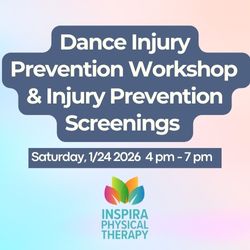Testimony to City Council on Committee on Economic Development (Jointly with the Committee on Cultural Affairs, Libraries, and International Intergroup Relations)
Thursday, September 24, 2020
Testimony to City Council on Committee on Economic Development (Jointly with the Committee on Cultural Affairs, Libraries, and International Intergroup Relations)
Testimony to City Council on Committee on Economic Development (Jointly with the Committee on Cultural Affairs, Libraries, and International Intergroup Relations)
Prepared by Dance/NYC
On behalf of Dance/NYC, a service organization which serves over 5,000 individual dance artists, 1,200 dance-making entities, and 500 nonprofit dance companies based in the New York City area, including BIPOC (Black, Indigenous, People of Color) dance workers, immigrants, and disabled dance workers. I join colleague advocates working across creative disciplines in thanking the Committee for your leadership during this time and in requesting:
- The City to include the Arts and Culture and the dance community in legislation allowing for immediate and safe reopening of public outdoor spaces for cultural and artistic performances that follow social distancing guidelines;
- The City passes legislation allowing the dance sector to generate revenue from outdoor socially distanced performances that extends into 2021;
- The City passes legislation to provide financial support for cultural organizations to produce outdoor socially distanced performances in public spaces and support their wages, salaries, PPE and overall production costs; and
- The City provides specific reopening guidelines for the dance sector, which are not gyms and serve a key function in the community.
It has been over six months since arts and culture organizations have had to pivot with 95% percent of organizations cancelling their programs, 88% modifying the delivery of their programs, and 11% not providing products or services to their communities, according to SMU Data Arts and the Department of Cultural Affairs’ COVID-19 Impact on Nonprofit Arts and Culture in New York City report. In most cases, arts and culture organizations have had to change their in-person programming to online for a fraction of the revenue they would have collected and at the same time fixed costs including: rent and salaries, have not caught up with this change. Small business and family-run dance studios are facing closure due to poor understanding and enforcement of the dance sector in the City’s reopening plans in addition to their mounting overhead. These are key pipelines for the dance sector in addition to the department of education, professional programs and Broadway. Furthermore, there is a mass exodus of artists leaving the City due to lost performance opportunities and inability to generate enough income to cover basic needs such as housing, food and healthcare.
The arts are necessary for community building and mental health, both of which are largely at risk due to social distancing measures. According to SMU Data Arts and DCLA, community-based arts organizations (especially those that focus on cultural and ethinic awareness, folk arts, and community celebrations) in the City have reported losses of 12% , unanticipated expenses of 12%, and have lowest level of Working Capital relative to expenses at 1.6 months heading into the crisis. In Dance/NYC’s Coronavirus Dance Impact Survey, one organization shared, “We're deeply concerned with the health crisis (physical and mental), loss of jobs and food security for people living in our community who were already vulnerable before COVID-19. Our programs have always served as a place of solace as the arts offer spaces for people to heal and seek solutions. It is important that we exist to help people weather the crisis psychologically and compliment organizations who are offering social services for displacement, health care and food.”
The dance sector’s economic contribution to the City is ~ $300 million yearly. This figure only includes organizations with 501c3 status indicating that the contribution is larger with the inclusion of fiscally sponsored organizations and individual artists. These organizations and artists need to be able to hold performances in a safe manner to be able to generate the necessary income to pay overhead costs, staffing and the increasing cost of rent. Americans for the Arts published that attendees at nonprofit arts events spend $31.47 per person, per event, beyond the cost of admission, demonstrating that the arts generate income for the surrounding businesses. Live indoor performances may not return for at least a year after a vaccine and these institutions are already experiencing severe cash flow issues and closures. Our findings show that dance organizations, groups and projects project losses of at least $22M in income including $16.5M in earned revenue and $5.5M in contributed revenue directly related to cancelled performances and lack of clarity and guidelines for the dance sector reopening.
The lack of performance opportunities are impacting individual dance workers whose livelihoods depend on it. Dance/NYC’s Coronavirus Dance Impact Survey highlighted that individual dance workers reported a cumulative loss of at least $4.2M in income related canceled performances and teaching engagements. These figures will only deepen as the timeline of the crisis extends. One respondent shared “I have lost all my future dance work due to Covid-19, I have no sources of incomes and I don't think I will be able to pay my rent, health insurance, bills and groceries much longer with no sources of income coming.” To add to this an organization expressed “Our dancers, in particular, are experiencing loss of other performance and rehearsal income, as well as a loss of gig-income from their supplemental jobs as bars and restaurants in NYC, are closed. We are most concerned about their livelihoods in this crisis and dipping into creative development funds to support them as much as we are able." Thus, artists and the organizations who employ them, need swift legislation about the immediate and safe reopening of income generating in person performances, if not the City risks losing this necessary workforce for years to come. Already the Department of Education budget cuts in arts education, earlier this year, have decreased artist staffing. According to SMU Data Arts and the Department of Cultural Affairs’ COVID-19 Impact on Nonprofit Arts and Culture in New York City report some of the greatest reductions to artist employment have come from Arts Education organizations, which collectively reported decreases of over 2,100 artists, or 78% of artist staffing, during this period.
We acknowledge the work that has already been carried out to safely reopen the City, including the safe reopening of museums and the initial steps to allow for the safe reopening of public spaces for use by the Arts and Culture sector; including the limitation of gathering to below 50 audience members. However, the dance sector has not been provided specific guidelines for reopening due to lack of understanding of the sector and the city's failure to include a dance specific representative in the advisory committee for arts culture and tourism from the mayor's office. In addition, the current permitting fees for revenue generating performances are a financial burden and hindrance to dance organizations who are already strapped for money. Therefore, we are asking that the City waive these permitting fees regardless of if the event is free or revenue generating for small-budget dance makers who need revenue generating performance to survive. Alternatively, City funding to produce these performances is essential. Swift legislation considering the immediate and safe reopening is desperately needed to mitigate the long term effects to the arts sector before winter sets in and we can no longer conduct outdoor classes and perform. Moreover, legislation into spring and summer of 2021 is essential for organizations to begin planning. Artists are by nature creative people and are willing to work in tandem with City officials to allow for safe socially distanced performances.
The arts are a fundamental and integral part of the City’s ecosystem that drives tourism. Dance/NYC strongly advocates for a vision rooted in inclusivity, equity, and sustainability for the arts and culture industry. Artists are necessary workers and in order to continue to be a driving part of the NYC workforce, comprehensive dance-specific reopening legislation is needed so that arts and culture can continue to thrive in a city known for its arts and culture.
For Dance/NYC and its constituents, the most urgent priorities are:
- Legislation allowing for quick reopening of weather permitting revenue generating socially distanced artistic performances that extends into spring and summer of 2021. Artists and dance organizations are eager for opportunities there is ample room for collaboration with different NYC offices including the Department of Parks & Recreation, Transportation, Sidewalks, Streets, and Highways, Health and Education;
- Waiving City permitting fees for arts and culture organizations to produce socially distanced outdoor performances, which are essential to generate revenue for their survival;
- The City allocates grant funding to arts and cultural organizations to produce outdoor socially distanced performances in public spaces and support artists’ wages, salaries and production costs.
- The City provides clear and specific reopening guidelines for the dance sector.
We commend New York’s city ongoing efforts to slow the spread of COVID-19, while safely reopening the City. The arts have been among the last to reopen and are critical to rebuilding the City. We thank the City Council members for their time and efforts in reopening the arts and cultural sector to bring dance to all New Yorkers.
##



